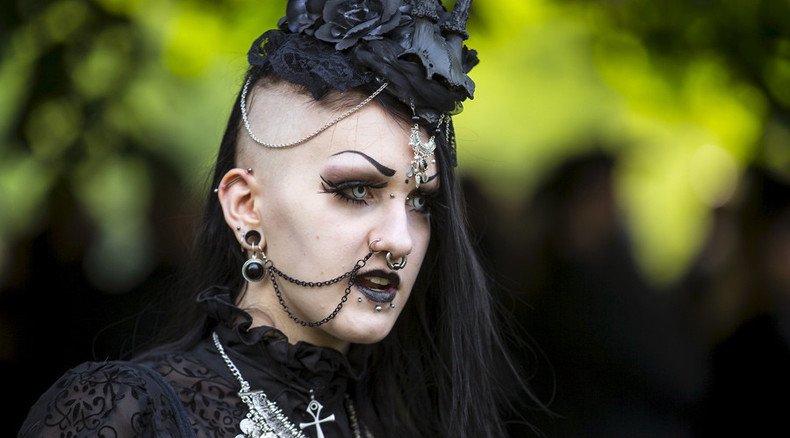Goths ‘more likely’ to self-harm & suffer depression than ‘chavs’ – study

British youths who identify as Goths are three times more likely to self-harm and be clinically depressed than other youth subcultures such as ‘chavs’, a joint Oxford and Bristol university study has revealed.
Oxford and Bristol University academics surveyed nearly 3,700 youngsters of eight subcultures including ‘skaters’, ‘chavs’, ‘populars’, and ‘loners’.
The researchers, who examined the cohort of 15-year-olds in Bristol, found that many of those who “strongly” identified as Goths were more prone to depression and suicidal thoughts.
Recognizable by their black clothing and eccentric hair, the young Goths were found to be three times more likely to self-harm and become clinically depressed by the age of 18 than their peers, according to the research published in the journal Lancet Psychiatry on Friday.
About one in five Goth respondents were found to be suffering depression and 37 percent admitted to self-harming.
Teenagers who “somewhat” identified as Goth at 15 were also 1.6 times more likely to be clinically depressed at 18.
Oxford research finds goth teens could be more vulnerable to depression and self-harm: http://t.co/inyb8IOIBEpic.twitter.com/uIaYpvMQ52
— Oxford University (@UniofOxford) August 28, 2015Skaters and loners also presented an increased risk of depression but not to the extent of goths, researchers found.
Those who identified as chavs (a contraction of ‘council house and violence’), sporty or popular at 15 were least likely to self-harm or become depressed at 18.
“Teenagers who are susceptible to depression or with a tendency to self-harm may be attracted to gothic subculture which is known to embrace marginalized individuals,” co-author Rebecca Pearson from the University of Bristol said.
We are NOT saying that being a Goth causes #depression or #self-harm..
— Lucy Bowes (@DrLucyBowes) August 27, 2015“Our study does not show that being a goth causes depression or self-harm but rather that some young goths are more vulnerable to developing these conditions,” lead author of the study Lucy Bowes from Oxford University said.
Speaking to RT, self-identified Goth and vlogger Simone Hill said joining the subculture was a “way for her to cope” with her “abusive” life experiences.
Hill claims she was beaten, starved and abused by her mother at a very young age.
“I was treated like a slave for many years.
“It helped me to deal with everything that has happened to me.”
Through Gothic culture, Hill says she found a way to “express what had been denied” to her.
This is the real England. Everyone together and accepting each other. Not matter race, religion or style. Loves. pic.twitter.com/na9VYmOv9z
— Simone Hill (@gothinisity) April 24, 2015The vlogger, who admitted to self-harming, said she was deprived from her youth and education.
“My mother took me out of school quite young. I had to catch up on my GCSE’s when I left home at 16. I was never allowed to be a kid. There was mental abuse also,” she told RT.
Hill also recalls being jumped and beaten up by a group of ‘chavs’ because of her Gothic appearance.
“What is the crime? Dressing Goth? They don’t understand it, they fear it. That or they just want to show off to their friends.”
Another Gothic blogger Emily Moose told RT she believes ‘chavs’ are the “normal” people in society.
“Goths are an easy target and chavs have a lot of confidence in themselves. There’s also more of them in this world.”
Ready pic.twitter.com/MGbnrY4uHp
— Simone Hill (@gothinisity) March 6, 2015Director of the suicidal behavior research laboratory at the University of Glasgow Rory O’Connor said it is crucial to understand how and why goths are at high risk of self-harming.
“We also don’t know whether these young people are less likely to seek help, because if this is the case that they are more reluctant to seek help when distressed, it may be difficult to reach this vulnerable population,” he said.
In a statement, the study’s authors said Goths should be closely monitored so that those at risk can be offered support.
The Gothic subculture emerged in the early 1980s alongside the rock music scene. In recent years, many have now moved into newer genres of ‘steampunk’ and ‘emo’.












